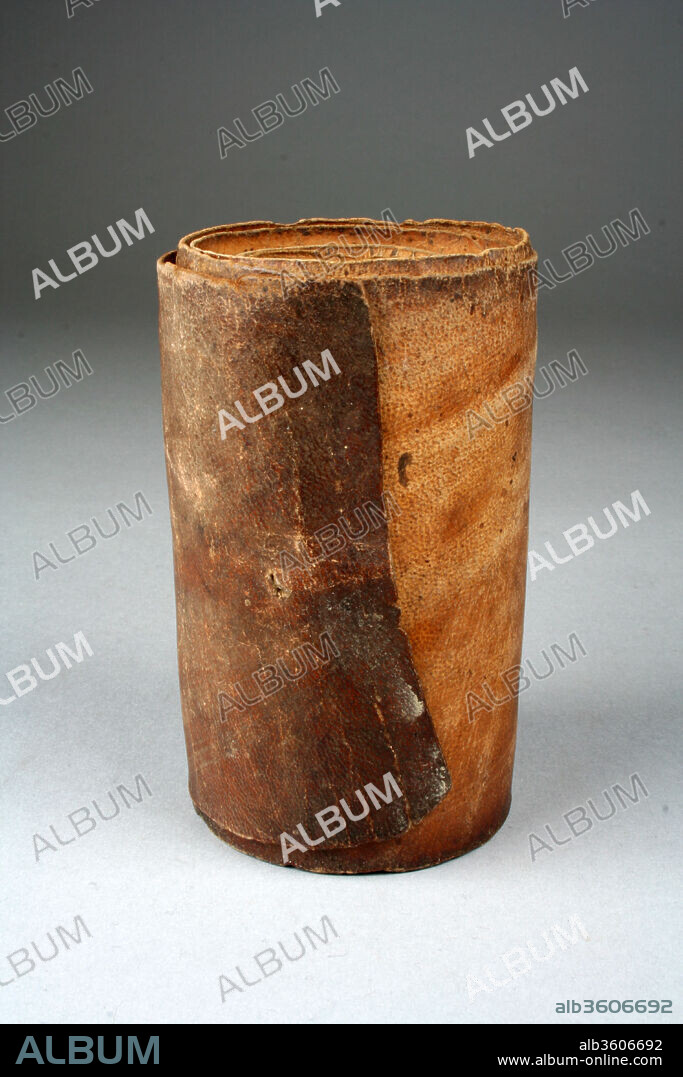alb3606692
Healing Scroll

|
Zu einem anderen Lightbox hinzufügen |
|
Zu einem anderen Lightbox hinzufügen |



Haben Sie bereits ein Konto? Anmelden
Sie haben kein Konto? Registrieren
Dieses Bild kaufen
Titel:
Healing Scroll
Untertitel:
Siehe automatische Übersetzung
Healing Scroll. Culture: Amhara or Tigrinya peoples. Dimensions: W. 3 1/2 x L. 75 in. (8.9 x 190.5 cm). Date: 19th century.
Ethiopian healing scrolls use written prayers and talismanic imagery to combat demons that cause illness. This scroll was constructed from four pieces of parchment sourced from a ritually sacrificed animal. The preparation and viewing of the scroll are equally vital parts of the healing process. The talismans on this example are rendered in washes of red, black, and green, their sketchy, rounded outlines lending the work an overall linear simplicity. In the uppermost talisman, a youthful, beardless saint rides a rearing horse. His bare toes wrap around an Ethiopian toe stirrup as he points his spear upward in the pose of the victorious knight of Christ. Images of saints were popular in Ethiopian Christian art for their association with spiritual intervention. This example may illustrate Saint Tewodros, who was commonly depicted astride a red horse.
In the central panel, a frontally posed archangel--likely Michael--wears a striped robe and holds a sword aloft in his right hand. According to the Ethiopian Orthodox Church, Michael can force demons to permanently leave their human hosts. A checkerboard motif of alternating faces and geometric patterns forms the final talisman. In combination with prayers, the X-motifs formed by two intersecting white rods aid in the undoing of spells.
Kristen Windmuller-Luna.
Technik/Material:
Parchment, pigments
Museum:
Metropolitan Museum of Art, New York, USA
Bildnachweis:
Album / Metropolitan Museum of Art, NY
Freigaben (Releases):
Model: Nein - Eigentum: Nein
Rechtefragen?
Rechtefragen?
Bildgröße:
2240 x 3360 px | 21.5 MB
Druckgröße:
19.0 x 28.4 cm | 7.5 x 11.2 in (300 dpi)
Schlüsselwörter:
 Pinterest
Pinterest Twitter
Twitter Facebook
Facebook Link kopieren
Link kopieren Email
Email
